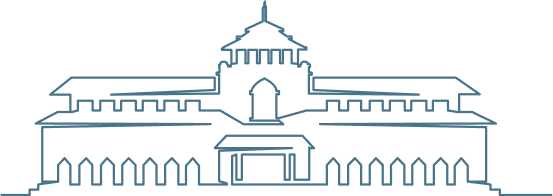As more and more businesses require employees to return to the office (RTO) there have been two popular, but cynical, takes on the trend. The first is that the businesses don’t want their offices sitting empty, especially if they own them rather than lease them. The second is that the businesses are control freaks and want to be able to once again monitor their employees every moment.
These takes are not completely wrong. There will always be businesses that make decisions based on dubious reasoning. But for most businesses that have more than a handful of employees, bringing them back to the office can be a matter of survival.
As a company that provides software development services and employs a large and growing team of software developers, we’ve felt the impact of Work From Home. It’s affected our staff and our operations to the point where we are now implementing practices to counteract it.
This article is a discussion about what we experienced during the COVID WFH period and its aftermath, what we’ve learned from it, and how we are changing the way we work to address it.
How Work From Home impacted our day-to-day operations
During the early part of WFH under COVID we experienced minimal impact in our transition away from the office. This was due to all of our staff transitioning directly from the in-office experience where they all knew each other well and were part of the culture.
It was during the later phase of COVID WFH, when everyone had undergone extended isolation and new staff members had joined us, that we started to see the impact on our culture and our mission.
The impact can be summarised in 4 words – Continuity, Clarity, Capability and Growth.
Continuity, in this context, includes maintaining a business’s culture, practices and institutional knowledge while also preserving staff development and advancement and integrating new hires into the business.
Clarity is having a clear view into the operations of the business. Some parts of this view can be found in reports. Other parts are found in meetings. Some parts are found only by in-person interactions and observations.
Capability is being able to execute at the level your business needs. The big challenge of running a business is you never have the perfect person for every role. You need to be able to work with the resources you have. But these resources might limit your options.
Growth is exactly what it is. It might be growth in product or service offerings or growth in size or growth in profitability.
The impact of Work From Home on staff
No-one can deny that people like working from home. At the same time, no-one can claim that everyone likes working from home or that everyone is better off working from home or that there are no negative consequences created by WFH strategies.
What we found with our large team was that the people who fared best under work from home were in senior roles, had strong communication skills, and were in positions that required only minimal collaboration or reporting. Senior developers are an example of this kind of role.
On the other hand, we found junior developers were struggling to complete work. This caused them stress and in some cases anxiety. They suffered, their work suffered, and more pressure was put on senior developers to fill in gaps. But it was during lockdown and we all just soldiered on.
When we began bringing employees back to the office we found that many of our junior developers were still just that – junior developers. Despite the amount of time they had been with SoftwareSeni they had made little advancement in their skillset, including not just programming but the soft skills that are part of working within a team, as well as in carving out their own unique career path. We saw a similar slowdown in our mid-tier developers as well.
We use a mix of formal and informal mentoring. Formal mentoring includes activities like shared planning sessions and code reviews. Informal mentoring covers all those little moments of learning and experience transfer that happen in an office. In an office environment it is easy to turn to someone more experienced for help when you get stuck. In an isolated environment like WFH, where finding a free coworker with the right experience and organising a video call and screen sharing is necessary to answer a question, that question might go unanswered, creating delays or resulting in a poorer quality solution.
There is also learning by osmosis that takes place in an office environment. Being present while more experienced coworkers discuss problem solving and strategies for the problems they face is itself an opportunity for learning.
You may be reading these examples and imagining solutions for each of them that don’t require working in an office. Just put a call out on Slack. Invite junior developers to Zoom calls. They look like solutions, but the level of friction in using them and the quality of the experience they provide results in worse results than simply being in the same space together. We know this because we had staff working from home for nearly two years using these “solutions” and things are going so much better now most of the team is back in the office.
Bringing the team into the office is necessary for Continuity: continuity of our team members’ careers, continuity of inhouse experience, and continuity of “institutional knowledge” and our culture.
Without this emphasis on maintaining continuity a business like ours with a team in the hundreds could see a collapse of our capabilities and our quality of execution drop to the point where we can no longer be competitive.
The impact of Work From Home on management
Goodhart’s law states “When a measure becomes a target, it ceases to be a good measure”. This law is about how when given a target, like a KPI, people’s natural tendency is to optimise their actions and find ways to game the system to hit the target.
During Work From Home we found something similar happening in our regular meetings. It wasn’t malicious, it was just the outcome of the team striving for efficiency.
Since, of course, all our meetings were video meetings, we adopted clear agendas for running our regular meetings. We all knew in advance what needed to be discussed and we got through them quickly and cleanly despite the inherent clumsiness of group video calls.
But once we returned to the office it became apparent that what was being reported in the meetings had become a streamlined, tightly focused delivery of the agenda items. Issues of all kinds had developed in the business but they had fallen through the cracks of our carefully planned and cleanly executed meetings.
The issues had been allowed to develop because as everyone was sitting alone in their home offices they weren’t just physically isolated from each other, they were physically isolated from the issues. And almost all the issues were complex and identifying them as issues from a single perspective was unlikely.
You can’t have a report for everything. You can’t have a KPI for every facet of your business. Workflows can’t cover every situation. But there are still countless factors that need to be monitored and dealt with.
They’re different for every business, they’re different for every department, and they’re different for every team. Seal everyone off from each other and you may never be able to connect the dots.
Clarity comes from having multiple views of the same shared experience. Clarity comes from secondary sources, back channels, passing comments, and interactions with the team. This is where recognising problems and solutions begins. From here they end up in reports.
Your team might not be ready for Work From Home
This is where Capability comes into play. Your business needs to be able to run, survive and thrive with the team you have available. What you can do is constrained by the skill and experience of your team.
We found performance under WFH was dependent on the skills of the manager. WFH, and remote work in general, requires a higher level of skill to pull off than normal in-office team management.
It takes time to adjust to the different management style. Again, like our meetings discussed above, reducing all interactions to video calls that need to be scheduled or coordinated changes outcomes.
Simple things that don’t need a meeting to be shared, like job status, hours worked, and so on, are easy to monitor. Addressing them, however, along with other more subtle concerns, like engagement, role clarity, skill acquisition, morale, and work quality, is made more difficult by the inherently confrontational format of a video call.
One of our main services is software development team extensions. Remote teams as a service, basically. You would expect that we would be masters of remote team management. But the teams are remote teams only for our clients. All of our team members, before COVID, worked out of our offices. Part of our service is acting as a secondary level of management or as a team support role for our clients. This was done in-person until the lockdowns. Which meant our team support staff had to learn the new skills required to manage remotely. Some adapted better than others.
How to grow if your Clarity, Continuity and Capability are impaired?
Some businesses rely on employees executing in roles with basic skill requirements. Other businesses rely on a small number of highly skilled employees who can execute independently of each other. These businesses can continue to do well under Work From Home or with a fully remote team.
If you’re like us, where your team is growing, where you need employees advancing between roles, and you need the resilience of a team where knowledge is shared instead of siloed, then Work From Home is not the best option.
Growth for a business relies on having a long term vision and the strategies that support it. For SoftwareSeni, our team is the heart of our strategy: growing our team, helping them develop their skills, supporting them as they grow to be important contributors to our company and to our clients.
With people at the centre of our growth and success, Work From Home has been a disadvantage. It didn’t stop us from delivering for our clients, but it did slow us down as an organisation. A big part of that slowing was the result of difficulties being faced by so many of our employees.
A return to growth
In January 2023 we started bringing the team back to the office. With a couple years of remote work experience throughout the organisation, we have been able to approach it with flexibility.
Some roles are able to split time between WFH and RTO, and most roles are able to WFH on the occasion where a stint of independent work aligns with current requirements.
Clarity and morale, which is really the keystone of continuity, were the first and most obvious wins as the bulk of our team returned to the office. No-one would say they enjoy a return to commuting, but the ease of working in a team that is physically present, in terms of efficiency, quality and camaraderie, does help ease the pain.
The WFH period has left us a more flexible team and a more resilient team. This increase in capability is contributing to a new burst of growth as projects and inhouse programs that were planned during COVID and were waiting on our return to the office are now being implemented.
Not every business needs to work from an office. And there are probably very few businesses that need every team member in the office every day of the week.
Looking at your business through the lenses of Clarity, Continuity, Capability and Growth, like we did, provides a clear structure for helping you decide where on the continuum between Work From Home and Return To Office your business needs to place itself.












